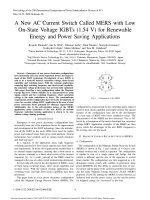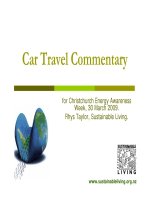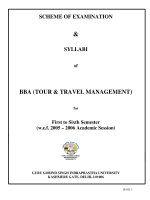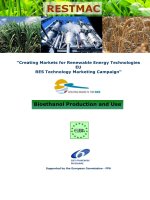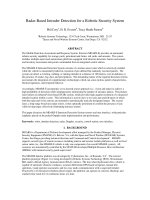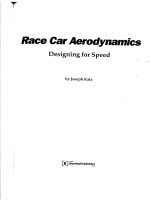Car Travel Commentary for Christchurch Energy Awareness Week, 30 March 2009. Rhys Taylor, Sustainable Living. ppt
Bạn đang xem bản rút gọn của tài liệu. Xem và tải ngay bản đầy đủ của tài liệu tại đây (3.58 MB, 29 trang )
Car Travel Commentary
for Christchurch Energy Awareness
Week, 30 March 2009.
Rhys Taylor, Sustainable Living.
www.sustainableliving.org.nz
We seem to Love our Cars!
Advantages to the Car User
Door to door transport, if parking space.
Flexibility on timing, if congestion allows.
Passengers, including the younger & older.
Inexpensive if several share car, or if only
fuel cost is considered (already have car)
Large load carrying – boot, roof, trailer.
Vehicles can be mobility adapted.
Play music of choice inside.
Status - conferred by society on the user?
Disadvantages for Society?
Fast, wide traffic routes
deter pedestrians and
cyclists; cut through
whole communities.
Ever more land for roads
and parking space is at
high cost to car owner,
taxpayer and ratepayer.
High public costs for
hospital & accident/
emergency services: city
road accidents at 26 per
1000 people per year.
Driving unhealthy – is
inactivity plus
the body’s
stress responses.
In USA: 50% are active
and fit, 25% barely active,
25% are completely
inactive! Similar in NZ?
Noise intrusion.
Cars, cars, more cars
48million cars/year are manufactured globally
40m cars/yr discarded in USA+ Japan+ Europe
NZ has twice level of household car ownership of the
UK, near-equal to USA
Fuel demand was growing 4% a year, until 2008.
Making a car requires more (embodied) energy than
the average car will use in fuel for its first 10 yrs.
we import inefficient older cars
And waste fuel in them, then scrap them!
Vehicle fumes hurt us!
Over 90% of toxic Carbon Monoxide (C0) in city
atmosphere comes from car exhaust pipes.
Increased levels of C0 reduce the amount of
oxygen carried by haemoglobin around the body
in red blood cells.
Nitrogen Dioxide (N0
2
) is a brown acidic gas
from car tailpipes, and also from welding,
factories & fires. 80% of N0
2
in city atmosphere
comes from car exhausts.
Nitrogen dioxide causes respiratory problems &
inflames the lining of the lungs. It can reduce
resistance to lung infections.
Typical car emissions
• Exhaust nitrogen oxides
(NOx) and hydrocarbons,
in sunlight create a
‘photochemical smog’
that damages lungs,
prompting asthma,
worsening bronchitis.
• Tiny soot particles from
burnt fuels, especially
diesel, also carry irritants
and carcinogens deep
into our lungs.
• Vehicle emissions may
kill more city people
than local road accidents
(Auckland study).
• Carbon monoxide (CO)
is toxic; and both CO
and CO2 emissions are
‘greenhouse gases’.
New Zealanders Under Scrutiny
New Zealand is 4
th
largest producer of
greenhouse gases per capita (measured as CO
2
equivalents, coming after Australia, USA and
Canada). We burn less coal per person.
By 2005, NZ emissions grew 37% over 1990
levels. Increasing livestock numbers is a
significant methane contributor, but a large part
of NZ increase is CO
2
from growth in road freight,
car ownership and higher use of cars. Air travel
only a small part, but it’s growing fast too.
We are in new territory for CO2 levels, beyond
historical variation of ice ages and warm periods
Can the Climate Cope?
The 700
billion tonnes
of carbon
released if we
burn known
oil reserves
will push
global temp
up past the
critical 2
o
C
threshold for
global
warming
(‘run-away’)
Then
you
add
the
coal
and
gas
Global Warming is Real
Summer melting of Greenland ice sheet edges
Greater summer
melt of Arctic sea
ice threatens bears
Variation in CO2 Emissions for a 10km trip
3.7
2.1
1.1
0.9
0.0
0.0
0.5
1.0
1.5
2.0
2.5
3.0
3.5
4.0
Large car (>2L engine) Average sized car Carpool (2 people or more) Bus Bicycle/walking
kg CO2
Variation in Co2 emissions for 10km trip
Car, 2l engine
Smaller car
Per person,
shared car
Per person,
bus
Bike, walk
Petrol Price Trend is Up
Global Oil Demand
What is Peak Cheap Oil?
Global oil field discovery
peaked in early 1960s
Annual finds have declined
since (Almost no ‘easy’ liquid
oil reserves left to find)
Production peaks 25 - 40 yrs
after discovery peak in each
region
90% of all conventional oil
reserve discovered globally
is now in production stage
NZ potential oil mostly
offshore, costly to access.
Supply & Demand Converging
Where else is Oil used?
Air travel, car-making,
plastics, paint, heating,
PCs, pesticide, fertiliser,
pharmaceuticals, etc.
Addicted to Oil?
95% of all transportation, whether by land, air or sea,
is fuelled by oil.
95% of all goods in shops involve the use of oil.
95% of all food products require oil use (figures from USA).
The world consumes approx 85 million barrels of oil a
day (approx 5,500 Olympic sized swimming pools)
Compare to 1990 global oil consumption at just 66
million barrels a day
Can we escape car dependence?
Is always ‘needing’ a
car just a state of
mind?
How will you react to
fuel at $3/l, or $5/l?
Live nearer to work?
Not be able to afford
some jobs, schools &
leisure interests?
Driving tips to save on fuel
Combine journeys &
tasks, avoid shortest
car trips entirely
Give workmates &
friends lifts: carpool
Don’t carry
unnecessary boot
loads, or roof-boxes
Use correct tyre
pressures, check!
Preventative
maintenance and
tuning the engine,
especially diesels,
extends vehicle life
and reduces sooty
air-pollution
Use smaller vehicles
Driving styles and ‘mode’ choices
If you drive at 90 km/h, you
save on buying 20% of the
fuel you’d require going at
109 km/h, adding only 12
mins per 100km. Start trips
earlier, to save the money!
Accelerate and brake gently
to save 10% of fuel costs.
Or, travel by coach or rail.
This cuts fuel use by 80%
compared to making a car
trip, for a solo traveler, if
the public transport is well
used.
Faster!
Fuel Economy by Car Type
www.rightcar.govt.nz/ or www.fuelsaver.co.nz
Worst:
15.8L /100km
Best fuel economy:
6.5L /100km
2 to 5 LSUV
Worst:
9.6 L /100km
Best fuel economy:
4.4L /100 km
1.4 to 2.2 Lmed
Worst:
8.8 L /100km
Best fuel economy:
4.3L /100 km
Up to 1.4 L
cc
small
How can technology help?
Low-sulphur fuels
Emission controls,
CATs
‘Hybrid’ & plug-in
electric/petrol
engines, less heavy
batteries.
Light-weight
aluminium
cars & smaller car
size.
Easier car hire.
Hybrid & electric cars available.
Batteries need improvement & ‘plug-in
hybrid’ not yet available in NZ
Hybrid dual-power system is
more complex to construct &
maintain, and heavy.
Time-saver, or life-shortener?
Road congestion trend = up 40% from 2000 to 2020
Is it really time saving to commute by car? You can
read and chat while on a bus; get fitter when cycling or
walking (& save money on gym fees); no parking cost!
Recent ‘commuter challenge’ in Christchurch showed
cyclists matching car travel times into workplaces.

